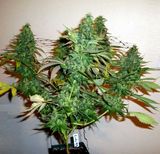Translation and adaptation: Rositsa Tashkova, Master of Molecular Biology and Microbiology
The causes of multiple sclerosis have not yet been fully understood, but variations in dozens of genes are believed to play a role in increasing the risk of the disease. Changes in the HLA-DRB1 and IL7R genes are the strongest genetic factors that determine the increased risk.
Studies have shown that herbal medicines can be effective in the treatment of multiple sclerosis and associated symptoms, reducing demyelination, improving remyelination and suppressing inflammation in the central nervous system.
This article is based on a 2018 overview on the topic. [ref. 1]. According to the authors, it can be concluded that the anti-inflammatory effect is the main cause of the therapeutic effects of medicinal plants in the disease. Through them, medicinal plants reduce the severity of the disease and reduce neuropathological changes.
Anti-inflammatory effects of medicinal plants are usually manifested by suppressing the entry of inflammatory cells into the central nervous system, reducing the production of pro-inflammatory and inflammatory cytokines.

Medicinal plants and their derivatives, which are known in the scientific literature to have a beneficial effect on the condition of MS patients, are:
- Ginkgo biloba,
- Ginger (Zingiber officinale),
- Turmeric (Curcuma longa),
- St. John's wort (Hypericum perforatum),
- Valerian (Valeriana officinalis),
- American cranberry (Vaccinium macrocarpon),
- Black cumin (Nigella sativa),
- Kava (Piper methysticum),
- Saffron (Crocus sativus),
- Asian ginseng (Panax ginseng),
- Sudanese frankincense (Boswellia papyrifera),
- European wine vine (Vitis vinifera),
- Gastrodia elata,
- Green tea (Camellia sinensis),
- Evening primrose (Oenothera biennis),
- MS14 [ref. 2] - Iranian herbal-marine mixture consisting of 90% Penaeus latisculatus (shrimp), 5% celery (Apium graveolens) and 5% St. John'swort (Hypericum perforatum),
- Cannabis (Cannabis sativa).
Here we will consider in more detail each of these plants and the mechanisms by which they can support treatment and alleviate the symptoms of multiple sclerosis (MS).
Read more on the topic:
1. Ginkgo biloba has neuroprotective properties
Ginkgo biloba is one of the most ancient living tree species of the Ginkgoaceae family. It originated in Korea and China, but can now be found all over the world. Wood leaf extract has traditionally been used as a means of improving memory.

Studies have shown that the anti-inflammatory and platelet-activating factor (PAF) inhibitory properties of ginkgo extract (EGB761) have a beneficial effect in MS. The likely therapeutic role of this plant on multiple sclerosis appears to be due to the substances ginkolids that affect PAF. It in turn plays a role in the process of inflammation and ginkgo biloba extract may suppress it.
In addition, the plant restores cognitive abilities, has neuroprotective properties and reduces fatigue in multiple sclerosis. The herb is safe, with no side or adverse effects, but in rare cases can cause dizziness, headaches and eye hemorrhages.
2. Ginger (Zingiber officinale) reduces inflammation
Zingiber officinale (ginger), is an aromatic plant of the Zingiberaceae family. It originates from India and is usually grown in Asia, tropical Africa and Latin America. The ginger root is often used as an aromatic spice and as a cold medicine. Recent studies have shown the anti-cancer, antioxidant and anti-inflammatory properties of ginger.
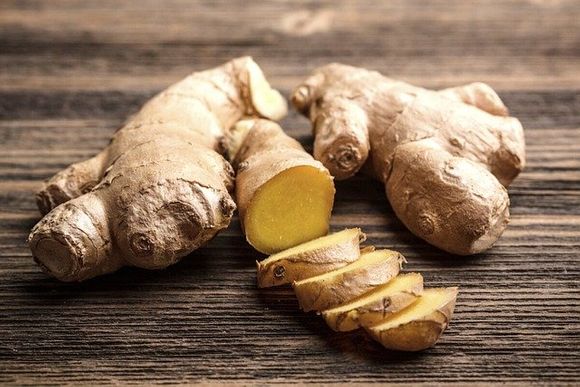
Ginger has anti-inflammatory effects, and this is the reason for its consumption by MS patients. Gingerols and their derivatives (shogaols) are the main components of ginger that exhibit anti-inflammatory properties.
Positive effects of ginger and its active compounds (6-shogaol and 10-gingerol) have been observed in animal models of multiple sclerosis. They have had anti-inflammatory and neuroprotective effects in animals, but clinical studies on MS patients are still needed to confirm these results.
3. Turmeric (Curcuma longa)
Curcuma longa (turmeric) is a tropical plant originating in southern and southeast tropical Asia. It belongs to the ginger family - Zingiberaceae.
The yellow substance in the roots of turmeric is called curcumin. It is widely used as a spice and pigment, as well as as a folk remedy for the treatment of problems with bile, anorexia, cough, sinusitis and sore throat. Studies show that curcumin has a wide range of biological activities, including anti-inflammatory, anti-tumor and antioxidant.
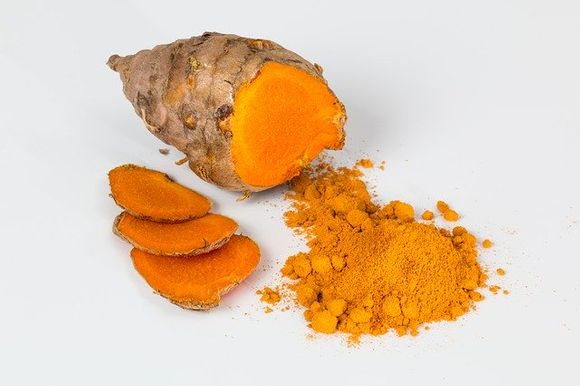
Curcumin performs its anti-inflammatory role in two main ways:
- suppresses pro-inflammatory cytokines,
- inhibits Th17 differentiation and associated pathways.
Also, it inhibits the entry of inflammatory cells into the central nervous system. Curcumin modulates the inflammatory process, reducing the expression (production) of various pro-inflammatory and inflammatory cytokines.
The side effects of curcumin are manifested when taking a high dose, which causes nausea and diarrhea. Although the therapeutic effects of curcumin have been demonstrated in various studies, studies in humans are certainly needed to confirm the recommendation for taking curcumin in patients with multiple sclerosis.
4. St. John's wort (Hypericum perforatum) against depression
Hypericum perforatum or better known as St. John's wort is a flowering plant of the Hypericaceae family. It is characteristic of Europe and Asia, but today it is distributed all over the world.
Since ancient times, St. John's wort has been a popular plant and has been used in diseases such as anxiety, depression and menstrual cycle disorders. Currently, H. perforatum is used to treat diseases associated with inflammation, cancer and neurodegenerative diseases.
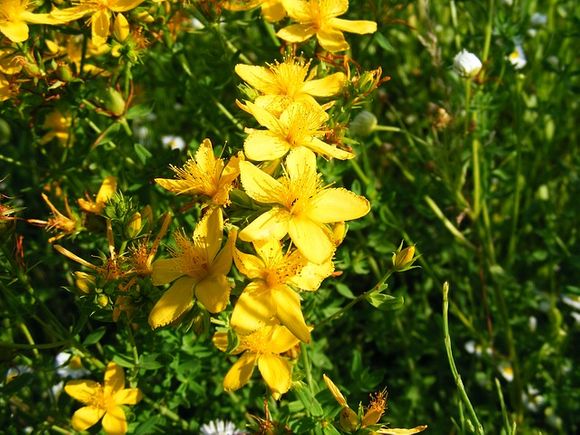
The use of St. John's wort in MS is associated with its antidepressant effects. The main antidepressant component of H. perforatum is hypericin, which stimulates capillary blood flow in the brain. Many studies focus on another component, hyperforin, for the therapeutic antidepressant effects of this plant.
It should be taken into account that this plant may interact with certain drugs, and it is important that its use be discussed with a medical doctor.
So, St. John's wort can be recommended to patients with multiple sclerosis due to its antidepressants, antioxidative and anti-inflammatory effects.
5. Valerian (Valeriana officinalis) against insomnia and anxiety
Valeriana officinalis grows in Europe, North America and parts of Asia. Valerian is a plant of the Caprifoliaceae family, and the roots of this herb are used for various healing purposes.
In Ancient Greece, valerian has found various medicinal applications - for digestive problems, epilepsy and urinary tract infections. Today it is also used for problems with sleep and anxiety.
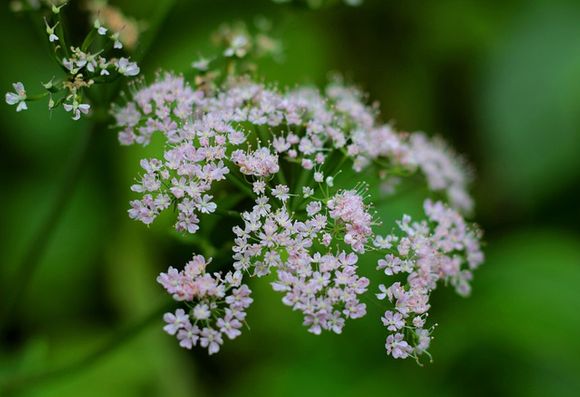
Sleep disorders are the main cause of fatigue in MS patients. Clinical trials have shown that the main component of V. officinalis root extract, valerenic acid, is effective in treating mild to moderate sleep disorders.
Limited adverse effects such as stomach pain and allergic reaction have been observed in patients treated with valerenic acid. The herb can be offered to patients with multiple sclerosis due to the relieving effects on insomnia and fatigue.
6. American cranberry (Vaccinium macrocarpon) against urinary infections
Vaccinium macrocarpon is also known as large cranberry and bearberry. It is a North American species of cranberry from the Ericaceae family. Cranberry juice is obtained from fruits. American cranberry is traditionally used for treatment of bladder and kidney diseases by Native Americans.
Patients with multiple sclerosis are susceptible to bacterial colonization and urinary tract infections, as a result of dysfunction of the bladder due to the disease. Cranberry can suppress the adhesion of the bacterium Escherischia coli to the urethra.

It contains two important compounds - fructose and proantocyanidine, which are attached to the fimbria (cilia for adhering to the mucous membrane) of E. coli and effectively hinder the ability of bacteria to attach to the urethra.
There are several clinical studies that examine the preventive effects of American cranberry on urinary tract infections in MS patients. Various studies have found that it is effective against urinary tract infections, but in one clinical trial of patients with multiple sclerosis it did not show a good enough effect.
7. Black cumin (Nigella sativa) enhances remyelination
Nigella sativa or black cumin is widely used as a medicinal plant. It belongs to the Ranunculaceae family. Black cumin is a native species to southern Europe, southwestern Asia and northern Africa.
Seeds and oil from N. sativa have a long history in the treatment of various diseases such as headaches, back pain and gastrointestinal problems.
Several studies have shown that it exhibits a variety of therapeutic effects, including anticancer, analgesic (painkiller), antimicrobial, anti-inflammatory, renal-protective and antioxidant properties. Timoquinone is the active substance in N. sativa seeds.
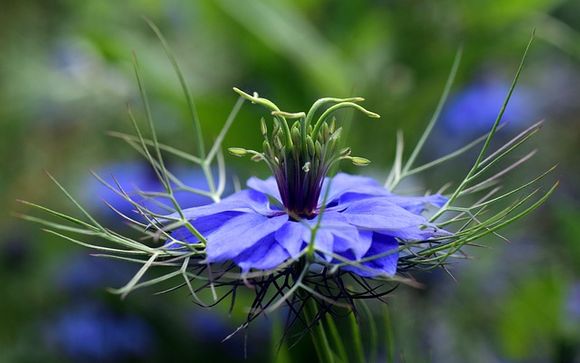
There are studies that show the anti-inflammatory capabilities of black cumin oil. In vitro studies demonstrate its inhibitory (depressing) effects on the production of inflammatory mediators such as IL-1b, IL-6, TNF-a, IFN-c, and PGE2.
Therapeutic effects of N. sativa in animal models of MS have been reported. Black cumin enhances remyelination in the central nervous system (CNS), reduces inflammatory processes and inhibits the expression of TGF β1 (transformative growth factor beta1) in some disease models.
8. Kava (Piper methysticum) against anxiety
Piper methysticum (kava kava) is a psychoactive herb from the Piperaceace family, which has been used in the Pacific Islands for hundreds of years. The root of this plant is well known for its sedative and anesthetic properties. Kava is traditionally used to make a soothing and relaxing drink.
The combination of kava and valerian seems more effective in treating insomnia caused by stress than any of the two herbs individually. The active compound of kava is kavalactone, which interacts with GABAA receptors and reduces anxiety and sleep problems.

It should be taken into account that kava may increase the sedative effects of drugs commonly used in multiple sclerosis disease, such as Lioresal (Baclofen). Excessive use of kava can lead to hepatotoxicity, hepatic necrosis and cholestasis hepatitis.
It can be concluded that kava alone or in combination with other herbal medicines is a promising candidate for the treatment of anxiety disorders in patients with multiple sclerosis.
9. Saffron (Crocus sativus) reduces neurological damage
Crocus sativus (saffron) is a flowering plant of the Iridaceae family. Saffron stamens are widely used as a medicinal plant for various problems due to its sedative, stimulating and anti-catarral properties (helps to remove mucous secretions from the respiratory system).
Several studies have suggested that saffron may be effective in the treatment of hypertension and memory disorders. In addition, anti-inflammatory and antitussive effects (against dry cough) have been shown. Crocetin and crocin are the two main active compounds of saffron stamens, which have a wide range of therapeutic actions.
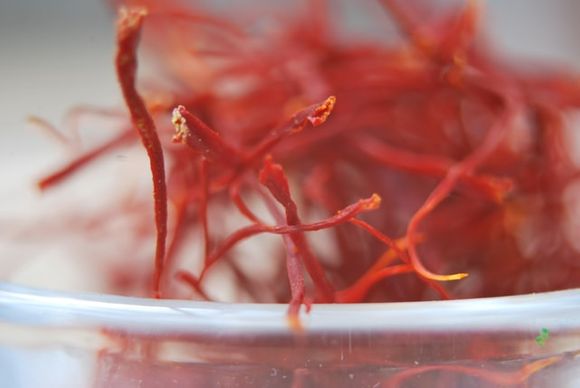
Antidepressant and anti-neuroinflammatory actions of saffron appear to be effective in multiple sclerosis. Crocin exerts its anti-inflammatory effects by suppressing the induced by syncytin-1 and nitric oxide (NO) cytotoxicity on astrocytes and oligodendrocytes.
Syncytin-1 is produced in highly elevated amounts in microglial cells, astrocytes, and glial cells in multiple sclerosis lesions. Crocin reduces neurological damage in experimental animal models of MS.
Studies show that crocin has antidepressant effects in mild to moderate depression. And it is a common condition in people with multiple sclerosis and the antidepressant activity of saffron can be very useful for its treatment in patients with MS.
Excessive consumption of saffron causes dizziness, nausea, vomiting and diarrhea.
10. Korean ginseng (Panax ginseng) is used in various neuro-inflammatory diseases
Panax ginseng or Korean ginseng is a traditional herb in Asia, where it has been used for thousands of years. Ginseng root is commonly used in the form of powder to regenerate the body and mind, to increase physical strength and prevent aging.
Read more: Ginseng: 8 reasons why the Chinese call it the "Queen of Herbs"

The main active substance of P. ginseng are ginsenosides, which exhibit anti-inflammatory, antioxidant and anti-apoptotic properties. In addition, ginseng is one of the most beneficial medicinal plants, which is used in various neuro-inflammatory diseases such as Parkinson's disease, Alzheimer's disease, Huntington's disease and multiple sclerosis.
Some research has shown that ginseng can reduce inflammation and fatigue, which is useful in MS patients.
Excessive intake of ginseng can lead to several adverse effects, including hypertension, insomnia, rashes and diarrhea.
We can conclude that ginseng is an effective means of lowering fatigue associated with multiple sclerosis and improving quality of life in these patients.
11. Sudanese frankincense (Boswellia papyrifera)
Boswellia papyrifera belongs to the Burseraceae family. Boswellia resin is traditionally used to treat ulcers, chronic inflammation and to maintain memory.
The main active substance in the resin of B. papyrifera is boswellic acid. Several studies show the various therapeutic effects of boswellic acid - anti-inflammatory, antitumor and antioxidant.
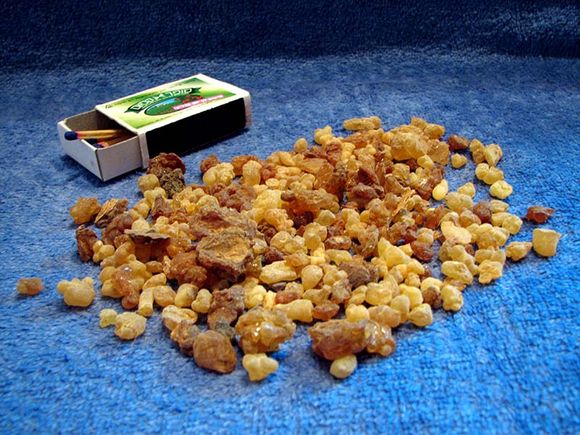
Cognitive impairment is a common clinical symptom in patients with multiple sclerosis, with the frequency of its manifestation reaching up to 70%. Cognitive deficiency in MS patients affects various aspects, including attention, information processing efficiency, processing speed, long-term memory and visual learning.
In one clinical trial, MS patients who were treated with Sudanese frankincense experienced a significant improvement in visual-spatial memory compared to the control group. [ref. 3] The administration of B. papyrifera appears to improve cognitive abilities in patients with multiple sclerosis, but larger trials are still needed to fully clarify the therapeutic effects of boswellia in MS sufferers.
12. Common grape vine (Vitis vinifera) has neuroprotective effects
Vitis vinifera (common vine) is one of the most important fruit crops in the world. The vine is cultivated in most countries of Europe, North Africa and West Asia.
The leaves and seeds of this plant have different healing properties. Resveratrol (trans-3,4,5-trihydroxystilben) is a phenolic compound that occurs in grapes in response to an attack of fungi. Resveratrol has pharmaceutical effects such as anti-inflammatory, anticancer, antioxidant and antiviral.

Several studies have reported neuroprotective and anti-inflammatory effects of resveratrol. It exhibits neuroprotective effects by suppressing the activation of microglia and reducing the production of pro-inflammatory factors.
Resveratrol can cross the blood-brain barrier and this makes it an ideal candidate for the treatment of neuro-inflammatory and neurodegenerative diseases.
Excessive intake of grapes can cause gastrointestinal disorders, including nausea, abdominal pain, flatulence and diarrhea.
The neuroprotective effects of V. vinifera have been demonstrated in various neurodegenerative diseases, but more specific studies are needed specifically on the effects on multiple sclerosis, in order to determine its therapeutic role in this disease.
13. Gastrodia elata (Tianma) improves memory
Gastrodia elata is a saprophytic herb from the Orchidaceae family. G. elata is a traditional Chinese plant. Tianma is the dried rhizome of G. elata, which is used as a folk remedy for various conditions such as headache, dizziness and hypertension. Tianma is usually used to treat neurodegenerative disorders and improve memory.
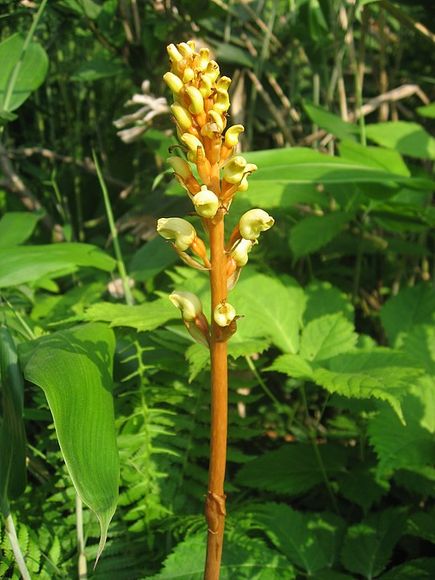
Due to the neuroprotective and antineuro-inflammatory effects of G. elata, the herb can be seen as a promising candidate for the therapy of multiple sclerosis. G. elata reduces free radicals and protects against damage to neurons.
The plant shows anxiolytic properties - reduces anxiety, and has protective effects against global cerebral ischemia, nitric oxide synthase enzyme activity and apoptosis (programmed cell death).
Gastrodin is the main active component of the herb tianma, which gives it its neuroprotective effects. Vanillin and benzyl alcohol are the other active substances of G. elata, which have anti-inflammatory effects, suppressing the generation of free radicals.
Tianma plays an important protective role in the processes of restoring neurons, therefore it can be a useful drug for MS patients. But in this case clinical studies on the effect specifically on patients with multiple sclerosis are needed to clarify the possible therapeutic effects of this plant in them.
14. Green tea (Camellia sinensis) has anti-inflammatory and neuroprotective properties
Camellia sinensis, well known as green tea, is one of the first drinks in the world by the Theaceae family. Dried leaves of C. sinensis are used in the production of green tea. Green tea is used for several different purposes, including weight loss, cardiovascular disease, inflammation and neuroprotection.

Epigallocatechin-3-gallate (EGCG) is one of the most important active compounds of green tea. It is attributed to the anti-inflammatory and neuroprotective properties of this plant. EGCG is a polyphenol compound that inhibits the production of inflammatory mediators such as TNF-α, IL-1β, and IL-6 (interleukins) and improves neuroprotection in the nervous system.
Regular and usual consumption of green tea is safe, but the consumption of high doses has liver toxicity. Green tea has anti-inflammatory effects that can protect the CNS from neurodegenerative diseases such as multiple sclerosis. Also, green tea regulates energy expenditure in the body, which can relieve fatigue associated with MS.
15. Evening primrose oil (Oenothera biennis)
Oenothera biennis (evening primrose) is a species of the Onagraceae family. Evening primrose oil is produced from the seeds of O. biennis and has numerous pharmacological effects.
Traditionally, this plant has been used to treat edema, as well as for other problems such as skin diseases, gastrointestinal disorders and asthma. Two parts of the plant are used to extract the oils from: the flowers and the seeds.
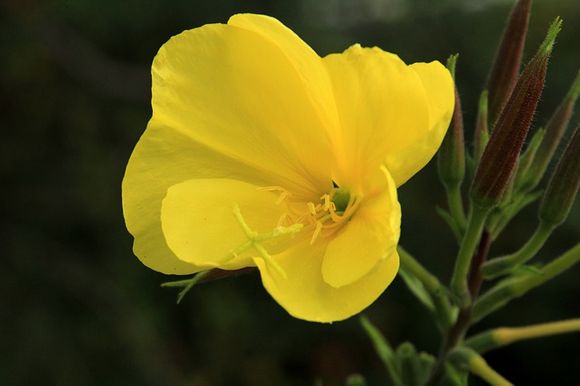
The application of evening primrose oil in the treatment of multiple sclerosis is associated with its anti-inflammatory and immunomodulatory effects. These beneficial effects are largely related to the content of polyunsaturated fatty acids (PUFA). Gamma-linolenic acid is a precursor to prostaglandin and is responsible for the anti-inflammatory effects of evening primrose oil.
In clinical trials, evening primrose oil resulted in a significant improvement in effectiveness in a dexterity test. In another clinical study, gamma-linolenic acid oil had an obvious effect in relapsing-remitting MS, reducing the incidence of relapses and disease progression. However, more clinical studies are needed to prove the therapeutic effects of evening primrose oil in patients with multiple sclerosis.
16. MS14 - an Iranian herbal-marine mixture
MS14 [ref. 2] is an Iranian herbal-marine mixture consisting of 90% Penaeus latisculatus (a type of shrimp), 5% celery ( Apium graveolens) and 5% St. John'swort (Hypericum perforatum).
In both animal models and human clinical trials, MS14 has shown effectiveness in the treatment of multiple sclerosis. Antioxidant and anti-inflammatory effects, are the two characteristics of MS14 that stop the progression of the disease.
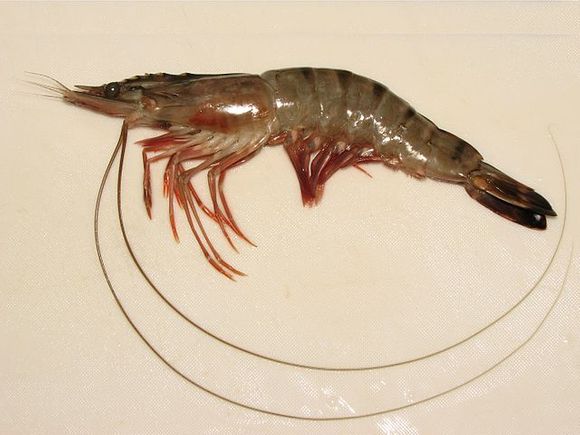
MS14 seems to improve quality of life and increases patient mobility (lower extremities). The neuroprotective and anti-inflammatory properties of MS14 are due to suppression of T-cell proliferation reactions and a decrease in expression levels of IL-6, IL-5, IL-10, TNF-α, and IL-lp. In addition, MS14 inhibits the infiltration of inflammatory cells in the CNS.
It has been reported that taking MS14 is safe without any adverse effects. More studies are needed to detect the mechanisms by which MS14 exhibits its neuroprotective effects.
17. Cannabis sativa has a variety of effects on MS
Cannabis sativa (marijuana, cannabis) is a flowering plant of the Cannabaceae family. C. sativa originated in Western and Central Asia, but was widely cultivated in Asia and Europe.
It is reported that the seeds, leaves and flowers of C. sativa have various therapeutic and medicinal applications. There are many studies that show the pharmacological effects of C. sativa, including analgesic effect, anticancer action, anti-inflammatory action, suppression of central nervous system activity and immunomodulatory effect.
C. sativa is the most important and most common plant that is used in the treatment of MS. There are numerous studies that show that consumption of cannabinoids reduces muscle stiffness, bladder function disorders, cramps, neuropathic pain and sleep disorders in patients with multiple sclerosis.
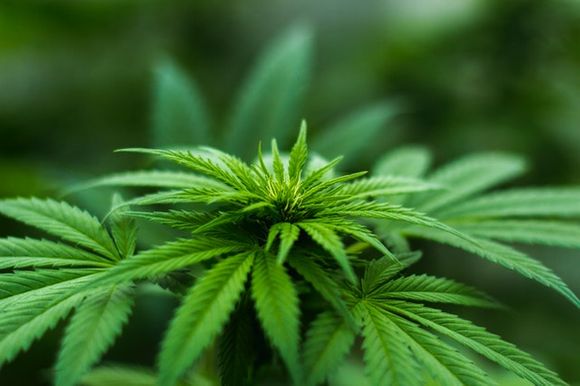
The main active substance in C. sativa is ∆-9tetrahydrocannabinol (THC). THC binds to cannabinoid receptors (CBR) in the central nervous system and acts as a partial agonist of the receptors for SV1 and SV2. THC has been found to have anti-inflammatory and neuroprotective properties. Some studies have shown the use of cannabinoids to improve spasticity in MS (abnormal movements due to over-tension in the musculature). Cannabinoids result in a significant improvement in spasticity reported by the patient.
In addition, the combination of THC and cannabidiol (CBD) is more effective for the treatment of moderate to severe refractory spasticity in patients with multiple sclerosis.
Cannabinoids and their synthetic forms in drugs show attractive anti-inflammatory effects in animal models of MS. Synthetic cannabinoids can reduce inflammation by suppressing the production of TNF-α (tumor necrotizing factor alpha) in the brain.
Also, synthetic cannabinoids can improve motor function by preventing infiltration of immune cells in the CNS and can reduce the secretion of pro-inflammatory cytokines such as IFN-μ, IL-17, IL-6, IL-1β, and TNF-α.
The product Sativex is a combination of THC and CBD and is a mouth spray that aims torelieve neuropathic pain, spasticity, sleep difficulties, bladder problems and other MS-related symptoms.
Cannabis also has some adverse effects, such as cancer risk, cardiovascular disease, nausea, vomiting and inability to drive a car.
Read more:



